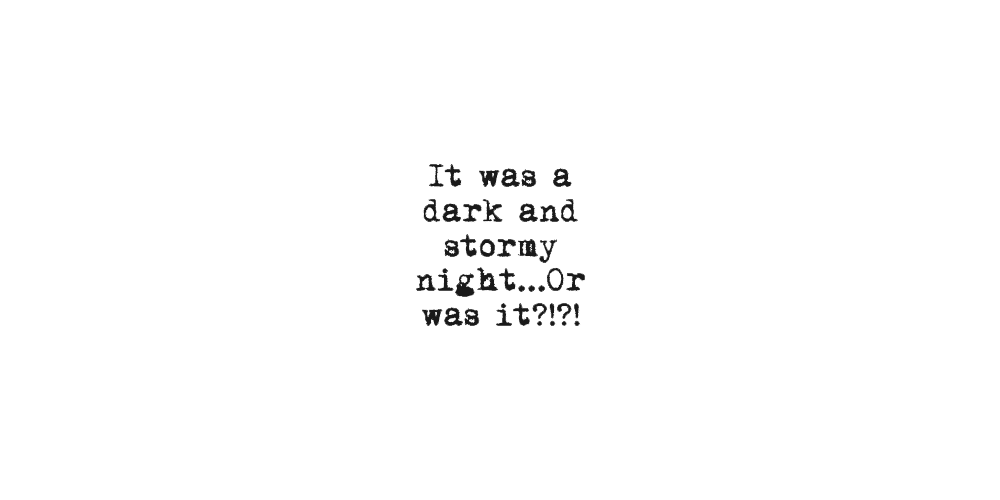Who, What, Where, When, Why, and How
Who, what, where, when, why, and how – the “five w’s and an h” – are words etched on the brains of every working journalist. As a youngster in elementary school, I had to learn them too. My teacher wanted us to learn how to write a well-organized report, and using the five w’s and an h worked well for that. For a day, the kids in my class were all little journalists – we each picked a topic and then determined:
I suspect teachers today still use the same method – at least, I hope so. When we are toddlers, we start to learn to categorize things. Things that are round and hard, like a plastic ball, can roll, whereas a box isn’t going to roll unless the toddler tosses it down some stairs. Once we get a little older – like in elementary school – we start to think in other, more abstract categories than just balls and boxes. In our mind’s eye, we can pick apart a topic and put it back together in a better way. Learning and applying the six questions in our writing can aid in this.
what was what,
and who did what,
and where and when and why and how
did
who do what to whom.However, writing is only one activity in which asking these questions can help the thinker. While it is true that most people don’t write much, most of us read a lot or watch the news. If we don’t want to dupe ourselves, we need to be critics of the newsperson’s work. If the reporter leaves the “why” out of a story, for example, do we really know what is going on?
Besides reading and writing, many of us start projects from time to time. Determining how the project will get done is a matter of asking and answering a series of questions. Suppose you are going to remodel a bedroom. Remodeling the bedroom is the “what,” but “who” will benefit and “who” will do the work? “Where” in the house is the bedroom? “Why” is the remodeling necessary? “When” and “how” will the remodeling be done? Before you ever start a project, those questions need to be answered.
So, “five w’s and an h” is a useful technique in various ways. On the other hand, it is not perfect. First up is a demonstration of how relying on “five w’s and h” can go wrong–how we can fail to get the story straight. After that, I discuss techniques to make it less likely that we get led astray by a mistold tale.
Knowing who, what, where, when, why, and how is not always good enough.
Consider the following news story:
At 3:30 PM, May 5th, 2024, Mr. John X was murdered at the corner of 25th and Moncho in the village of Hobgoblin. Ms. Jane Y allegedly shot Mr. X and then drove away. She was found and arrested by police officers shortly thereafter. More information will be available pending police investigation.
This brief story answers all of the standard questions but one:
- Who: John X, Jane Y, and the police
- What: Jane Y killed John X
- Where: Corner of 25th and Moncho in Hobgoblin
- When: 3:30 PM May 5th, 2024
- How: With a gun
The question that isn’t answered is “why”. That is pretty typical. At first, the reporter may not know why Jane killed John. Eventually, it will be known, but at a different time than the rest of the information. That won’t stop the report from being published. That delay is problematic:
Not knowing the answers to all six questions at the same time can lead to issues with how the audience understands the case.
Why is delay a problem? One reason is that we humans have a hard time correcting our first impressions. At first, many might think Jane is a cold-blooded killer. Suppose that a month later, the news station reports that Jane was being raped and shot John in self-defense. Hopefully, most people can change their view of the case accordingly, but there will be some who can’t make that adjustment.
Another problem with the delay is that the initial report gets most of the attention. When John is murdered, that story is a big deal. It gets top billing from the news station or newspaper. A month later, the interest in the case declines. The news about Jane getting raped gets put on the second page. A lot of people who were appalled by Jane killing John won’t read the second page and won’t find out she had a valid reason to shoot him.
There can be an even more fundamental problem:
In many cases, there will never be enough information to fully understand the situation, or the information available will be misconstrued.
That is a problem because the human race doesn’t like questions without an answer. We tend to fill in any blanks in the evidence with guesses. Worse, our previous opinions of the actors involved in a situation can taint our view—we will fill in the blanks favorably to the people we like and unfavorably to those we don’t like.
Finally, a reporter, witness, or participant in a situation may, intentionally or unintentionally, report false or incomplete information:
Reporters, witnesses, and participants in a situation may be unreliable.
Sometimes, the reporter is a victim of a time crunch. He has a deadline and must cut corners to meet it, even if it means not getting the whole story.
Sometimes, there is commercial pressure to report the story as early as possible. For example, a news network wants to be the first to call the results of an election, and it does so while voting is still going on. The losing party complains because this will discourage their voters from continuing to vote in the election.
Sometimes, the reporter injects opinion into a news report. The opinion could be in the words the reporter chooses, or it could even be done through tone of voice when a newsreader voices the news.
In other cases, there is deliberate deception. It may be overt, with outright lying, or more subtle, for example, by leaving a few words out of a quote. It is hard to know whether that sort of editing is innocent or deliberate because many writeups are edited to keep them at a reasonable length.
The easiest way to deceive or manipulate an audience is through the choice of stories that are reported or not reported. If your child fails to “report” that they skipped school for the day, you may never find out.
How can you avoid being snookered by a misleading story?
Back in the 1980s, President Reagan often used the phrase, “Trust but verify.” He meant that the United States wanted to keep an accurate count of the number of nuclear missiles that we and the Russians had.
While the United States has vast resources to “trust but verify,” an ordinary person can use the same concept by changing news sources occasionally. If your news network of choice is Fox News, watch one of the other stations for a while. It can be astonishing the difference in which stories are told and how they are told. That may lead one to ask a certain question more frequently: ” Who is telling the truth?”
One way of guessing who is telling the truth is to keep track of the success rate of the news source. If the news source makes a prediction that proves false later, that is one demerit. If the report from the news source itself proves to be in error, that is a bigger demerit.
If the story is important enough to you, keep following it up. Find the original sources for any quotes. If they differ in a meaningful way from what you first read, your news source is unreliable, at least for that story.
Beyond that, be a straight shooter yourself and tell the truth as best you can. That may sound goody two-shoes, but getting a reputation for lying can be harmful to your life and relationships. Telling the truth is contagious, and telling lies is contagious as well.
Finally, realize that we may never know the complete truth about any particular subject – we may never get the story one hundred percent straight. After all, we live in an imperfect world. Being a bit of a skeptic keeps us on our toes and out of trouble.
Related Articles
- Maintenance Management and the Internet of Things
- Maintenance Management at Home
- How to Improve Your Sleep by Revamping Your Bedroom
- Ultimate Guide to Complete Home Maintenance
- Awesome Home Improvement Advice
- Ultimate Guide to Complete Home Maintenance
###


